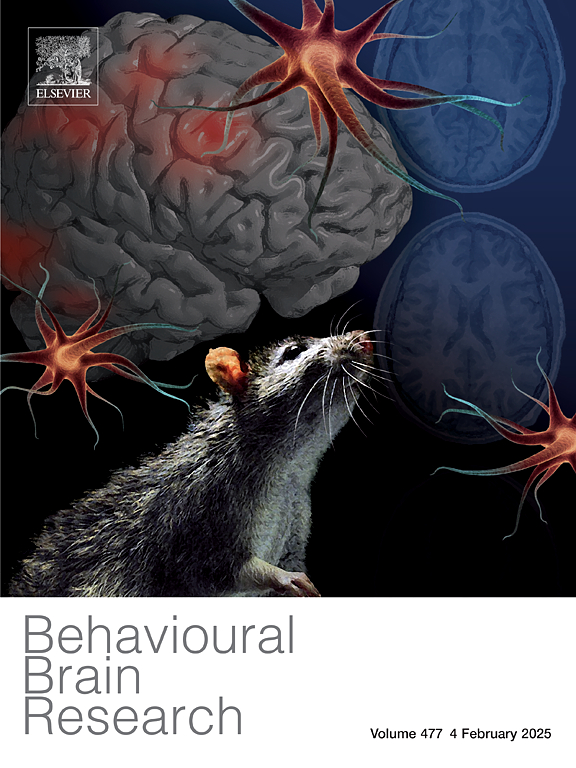环境毒物暴露对发育中的大脑中催产素和抗利尿激素系统的影响:影响风险和恢复力的因素。
IF 2.3
3区 心理学
Q2 BEHAVIORAL SCIENCES
引用次数: 0
摘要
环境毒物在世界范围内日益普遍,并与许多神经发育和精神健康结果有关。暴露于这些有毒物质,特别是在妊娠期和产后早期,会改变母亲和后代的应激反应、炎症和行为结果。催产素(OT)和精氨酸抗利尿素(AVP)是高度保守的神经肽,在调节社会行为、应激反应等方面发挥着无数的作用。虽然众所周知,发育压力会影响OT和AVP系统,但越来越多的文献表明,早期接触有毒物质也会影响OT和AVP系统的发育。在这里,我们回顾的证据表明,围产期暴露于环境毒物程序的发展轨迹的OT和AVP系统。围产期暴露于阻燃剂、农药、塑料和空气污染中会引起大脑中OT和AVP系统的各种变化,分别影响神经肽本身及其主要中枢受体,催产素受体(OTR)和抗利尿激素受体1a (V1aR)。接下来,我们讨论了毒物暴露对OT和AVP影响的两种生物学机制:内分泌干扰和母体免疫激活。最后,我们探讨了促进毒物暴露风险或恢复力的关键因素,包括心理社会经验、性别、肠道微生物群和暴露剂量/时间。总的来说,文献综述表明,在围产期预防母亲的社会心理压力,同时促进积极的社会心理体验,可能会减轻有毒物质对后代结局的影响。此外,肠道微生物群可能是毒物暴露与大脑OT和AVP系统之间的重要中介,因此是干预的目标。本文章由计算机程序翻译,如有差异,请以英文原文为准。
Effects of environmental toxicant exposures on oxytocin and vasopressin systems in the developing brain: factors imparting risk and resilience
Environmental toxicants are increasingly prevalent worldwide and associated with numerous neurodevelopmental and psychiatric health outcomes. Exposure to these toxicants, particularly during gestation and the early postnatal period, alters maternal and offspring stress responses, inflammation, and behavioral outcomes. Oxytocin (OT) and arginine vasopressin (AVP) are highly conserved neuropeptides with myriad roles in the regulation of social behavior, stress responses, and more. While developmental stress is well known to impact OT and AVP systems, a growing body of literature suggests that early-life exposure to toxicants also impacts OT and AVP system development. Here we review the evidence demonstrating that perinatal exposures to environmental toxicants program developmental trajectories of the OT and AVP systems. Perinatal exposure to flame retardants, pesticides, plastics, and air pollution induces a variety of changes to OT and AVP systems in the brain, affecting the neuropeptides themselves as well as their primary central receptors, the oxytocin receptor (OTR) and the vasopressin receptor 1a (V1aR), respectively. Next, we discuss two biological mechanisms of action that may underlie the effects of toxicant exposure on OT and AVP: endocrine disruption and maternal immune activation. Finally, we explore key factors that promote either risk or resilience to toxicant exposures, including psychosocial experience, sex, the gut microbiome, and dosage/timing of exposures. Cumulatively, the literature reviewed suggests that preventing psychosocial stress to mothers during the perinatal period while promoting positive psychosocial experiences may lessen the impact of toxicants on offspring outcomes. Furthermore, the gut microbiome may be an important intermediary, and therefore target for intervention, between toxicant exposures and OT and AVP systems in the brain.
求助全文
通过发布文献求助,成功后即可免费获取论文全文。
去求助
来源期刊

Behavioural Brain Research
医学-行为科学
CiteScore
5.60
自引率
0.00%
发文量
383
审稿时长
61 days
期刊介绍:
Behavioural Brain Research is an international, interdisciplinary journal dedicated to the publication of articles in the field of behavioural neuroscience, broadly defined. Contributions from the entire range of disciplines that comprise the neurosciences, behavioural sciences or cognitive sciences are appropriate, as long as the goal is to delineate the neural mechanisms underlying behaviour. Thus, studies may range from neurophysiological, neuroanatomical, neurochemical or neuropharmacological analysis of brain-behaviour relations, including the use of molecular genetic or behavioural genetic approaches, to studies that involve the use of brain imaging techniques, to neuroethological studies. Reports of original research, of major methodological advances, or of novel conceptual approaches are all encouraged. The journal will also consider critical reviews on selected topics.
 求助内容:
求助内容: 应助结果提醒方式:
应助结果提醒方式:


